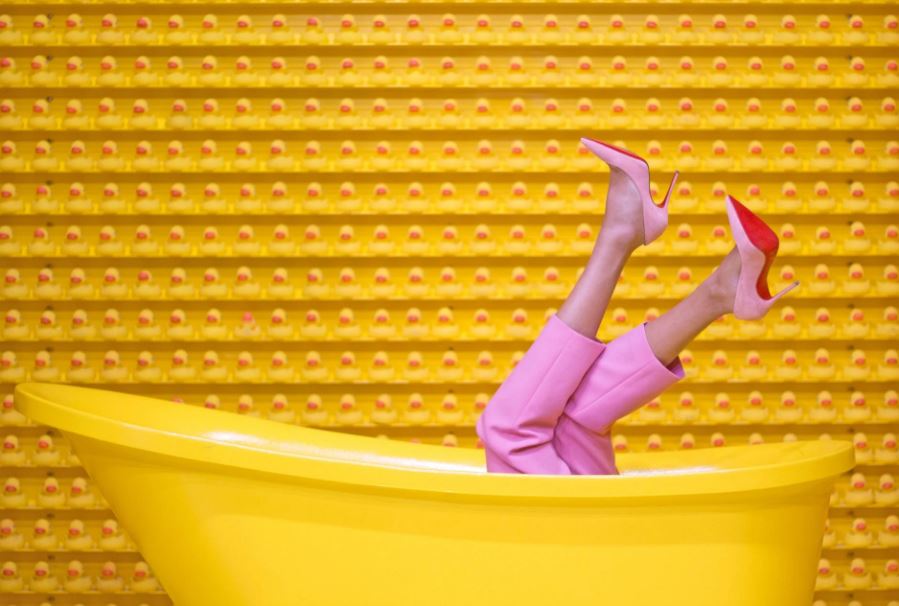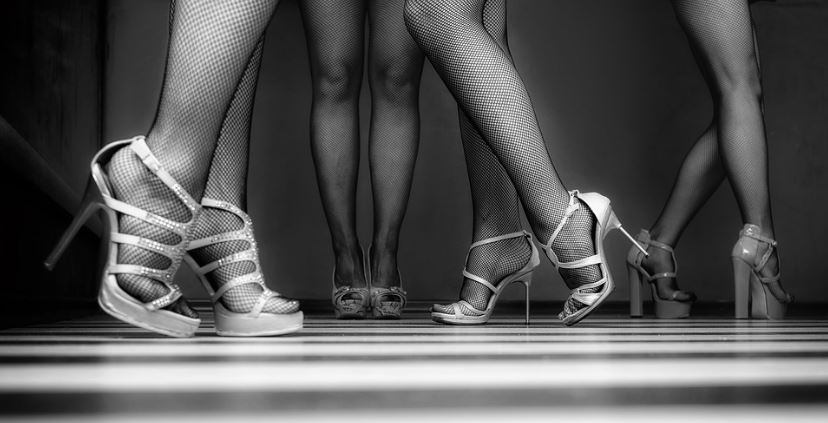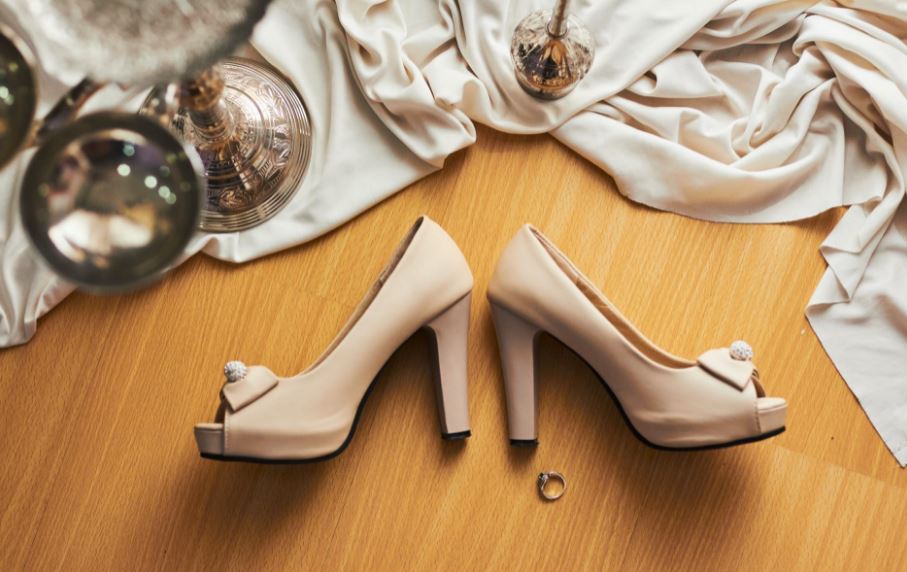High heels are more than just a style of footwear. The famous shoe style is a means for many women to express authority, femininity, and even sexuality. There’s an undeniable draw to the sentiments that come with wearing heels.
It’s only natural that women’s heels have remained popular for decades, from kitten heels in the 1950s to strappy heels in the 1990s. High heels have a long history and a lot of staying power.
Heels are still a staple of the shoe market in the 2020s, from classic black pumps to noughties-inspired models. For those who aren’t familiar with shoe terminology, navigating the endless selections of high heels can be tough.
There are heels in a range of styles for just about everyone. Contrary to popular belief, they don’t have to be unpleasant, either. Here’s the ultimate guide to high heels.
The History of High Heels
View this post on Instagram
Origins
The earliest recorded evidence of high heels dates from the 10th century CE in ancient Iran. Persia was the name given to Iran at the time. The Persian army held the distinction of being the first to wear high heels.
The Persians were great horsemen, and the Persian army’s cavalry was a vital component. Soldiers on horseback would charge at the enemy while standing in the saddle and firing a bow.
It takes a lot of skill to fire a bow from a charging horse. It needed a lot of talent and a little assistance from some innovative footwear.
The frightening mounted Persian archers wore high heels, that’s right! They weren’t wearing stilettos, of course. They did, however, wear the forerunners to stilettos.
When the Persians rose to fire their bows, they discovered that longer heels allowed their feet to stay in the stirrups. Despite the passage of millennia, the same approach is still in use today. For this reason, cowboy and riding boots feature a block heel.
High heels had found their way to India by the 12th century CE. A female dancer depicted at the Ramappa Temple is shown with high shoes.
They’re closer to platforms than pencil heels, perhaps. What’s fascinating is that this is the first mention of women wearing heels.
The Height of Fashion
By the 17th century, high-heeled shoes had evolved into something more comparable to today’s heels. The toes were lowered to the ground, while a little block lifted the heel. Initially, these opulent new shoes were only worn by men.
High-heeled shoes were a prestigious symbol in the 17th century. Men with a lot of money could only afford them. On a practical basis, only men who don’t need to work could wear them.
As a result, high heels were the shoes of princes, kings, and noblemen during this period in history. High-heeled shoes were a favorite of King Louis XIV of France, who began to see them as a symbol of power. The wearer is more powerful if the heel is higher.
Many paintings of Louis XIV include his ornate shoes. He also insisted that everyone entering his court do so in red high heels!
Celebrities were trendsetters back then, just as they are today. As commoners attempted to copy the king’s and his court’s elegance, heels became increasingly popular. As a result, restrictions regarding the height of the heel were enforced based on social levels.
Only royalty was permitted to wear the two-and-a-half-inch high heels. During the 17th century, female courtesans began to wear high-heeled shoes. Courtesans or women of the court were often able to perform tasks that their common counterparts could not.
The Revolution
As the eighteenth century approached, things began to shift. First and foremost, ordinary ladies began to adopt the look.
Naturally, there had to be a differentiation between women’s and men’s heels when women began to wear high heels as well. Noblemen’s sensitive egos need protection then, as they do now. Thinner heels made women’s heeled shoes more difficult to wear and uncomfortable.
Men stopped wearing heels as the Renaissance and Enlightenment progressed. The Enlightenment persuaded males that they were rational beings, in contrast to women’s irrationality.
Heels were unreasonable since they were worn for fashion and prestige rather than utility. As a result, heels were restricted to the realm of women.
This wasn’t the most significant change in the history of high heels during this period. The most significant alteration occurred around the end of the 18th century. Around the year 1780, the French Revolution wreaked havoc on the country.
High heels had long been linked with pride, authority, and royalty, even though they were worn by commoners and nobility alike. Nobody wanted to connect with royalty when the revolution began for fear of losing their head!
High heels and other cosmetic goods were also considered licentious in other countries, such as the United States and Britain. Women caught wearing heels would face the same fate as witches: they would be burned at the stake!
Revival of Heels
High heels made a comeback in the mid-19th century.
They first resurfaced at the height of around two inches. Heels became a staple of luxury fashion as the century proceeded, as more and more heel designs were patented. The Cromwell and Pinet heels were created and were quite popular during this time.
It’s worth noting that, thanks to the Enlightenment, high heels were only worn by women at this time in history. In the 1850s, the sewing machine was invented and mass-produced, allowing heels to be mass-produced. This significantly reduced the cost and made high heels more accessible to the general public.
Sex Sells
Two deadly world wars engulfed most of the Western world and Europe in the first part of the 19th century. Everyone, including heel makers, was subjected to rationing. Because more expensive materials like rubber, silk, and leather were no longer available, cheaper materials such as wood or cork were utilized for soles.
Despite the problems experienced by heel makers on the production lines, demand for high heels remained strong. Women wore heels to emphasize their figures at this time. Heels help tone muscles, make legs appear longer, and elevate the buttocks.
The invention and widespread use of photography and film helped broadcast pictures of sultry, high-heeled women worldwide. Audrey Hepburn and Marilyn Monroe helped persuade women that wearing high-heeled, typically stiletto-heeled shoes was the fastest path to a man’s heart.
Pin-up girls were also becoming increasingly fashionable at this period. This was especially true for warriors separated from their loved ones by thousands of kilometers.
Stilettos and many other thin, high-heeled shoes were fashionable in the early to mid-19th century, and their appeal has persisted until this day.
Types of Heels
It’s crucial to know the type of heel structure you’re going for while shopping for a pair of heels. Before scanning through numerous shoe selections, familiarize yourself with the following options.
Stilettos
Stiletto heels were first developed in the 1950s and had long, thin heels, often several inches tall. It’s no surprise that the stiletto dagger inspired this sort of heel, which is associated with powerful and edgy femininity, not to mention seduction.
Wedge
Wedge heels have a “wedge-shaped” element that elevates the heel while providing a flat platform to walk on, making them a wonderful introduction to heels with height. Wedges are known to be extremely stable, giving you the same size as towering heels but with more balance forgiveness because of the flat, strong sole.
Kitten Heel
The kitten heel, which gained popularity in the 1950s, is a form of stiletto that is substantially less scary. Even with the technical stiletto categorization, a kitten heel is only one to two inches high, making walking quite easy.
Kitten heels were originally designed as “training heels” for young girls, but their comfortable yet formal appearance quickly gained popularity among women of all ages. Kitten heels are popular today because of their retro appeal.
Spool Heel
A spool heel is a flared heel with an hourglass shape to it, spreading at the top, slimming out in the center, then opening at the bottom once more. The heel’s similarity to a spool of cotton or thread inspired the name.
Continental Heel
A stiletto with a straight front and a curved back is a continental heel. A continental heel is common in pumps, a traditional heel type.
Block Heel
A block heel is exactly what it sounds like: a wide, square-shaped heel that gives the user a lot of support. Block heels can be extremely high, extremely low, or anywhere between. They’re adaptable and usually simple to stroll into.
Tapered Heel
At the top of the heel, a tapered heel has a big, stable surface area, but it narrows to a narrower point at the bottom. This heel design, sometimes known as a cone heel, is more advanced than wedges but still provides adequate stability for individuals working their way up to a stiletto heel.
Flare Heel
The top of a flared heel is thinner, then the heel curves to a wider base where it links to the floor. The broad base of this heel shape provides more stability than many other styles of heels.
How to Pick Heels
This is where the decisions become challenging once you’ve decided on a heel style. You must still choose a color and heel height. You should also settle on whether you want a closed-toe, open-toe, or peek-toe shoe.
When choosing a heel height, keep your height and everyday activity in mind. While even the tallest woman should be able to wear 6-inch heels, if you don’t want other people to think you’re short or if you don’t want to stick out in a crowd, you might prefer something a little shorter.
You should also think about the shoe’s color. If you don’t have a lot of high heels, choose a nude or black color that you may wear with various outfits.
Wearing High Heels
Heels put some folks off because they don’t know how to wear them properly. Either the shoes aren’t comfortable, or they aren’t sure which ones to wear.
Styling Heels
View this post on Instagram
The size of the heel is one of the most important factors to consider. Some people believe that the higher the heel, the closer they are to God. Experts disagree, advising against wearing heels higher than three inches in particular cases.
Some individuals think that wearing really high heels is a touch too flashy. As a result, they may not be appropriate for conservative settings such as attending a funeral or going to church.
Also, be cautious at work. Check your workplace’s dress code one more time to see if there are any restrictions on the height of your heels.
When going to an interview session with your boyfriend’s family for the first time, it’s also an excellent idea to wear a shoe with heels of three inches or less. If your boyfriend’s mother is wearing 6-inch heels, you can feel free to do the same the next time you head out for dinner!
The shoe you choose can either shorten or lengthen your figure. Pointed heels, for example, create the illusion of length.
On the other hand, ankle straps will make short girls look even shorter. The straps have the potential to shorten the front of the legs.
Women with broad legs should avoid ankle straps. The straps can be overly tight, making the ankles appear larger than they are and drawing attention away from the lovely shoe.
Staying Comfortable
View this post on Instagram
When wearing heels, it’s critical to stay as comfortable as possible.
Choose the proper shoes for your activities to stay comfortable. If you’ll be walking and dancing a lot, choose a more comfortable shoe than if you’ll be sitting around all night. While beauty and elegance are vital, going barefoot won’t make you look as cute.
You should also wear the correct shoe size to keep comfortable. People will make the error of borrowing a pair close to their size yet not quite right from a friend. This can result in blisters that aren’t necessary.
Consult an expert to determine your right size. Once you’ve determined your size, try on each pair of shoes and walk around in them for a few minutes to check if they fit properly.
Finally, check for things to make your heels more comfortable at your local drugstore. Many companies sell shoe insoles and other products to keep your feet feeling terrific. Some companies sell goods that might help you take care of your feet while looking fashionable.
Buy the best high heels from Jeffrey Campbell or Charlotte Russe shoes and enjoy strutting in them the next time you go on a walk!




